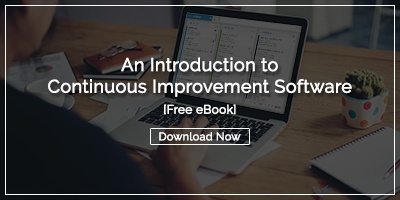 You know what phrase makes us very sad?
You know what phrase makes us very sad?
“We tried that before and it didn’t work.”
We hate hearing that because too often a failure or two prevents organizations from using improvement techniques with huge potential benefits. Unfortunately, we’ve heard this sad statement regarding Kaizen events.
When we dig into what happened, we usually find that the event was never set up for success. On the flip side, we have clients that credit Kaizen events for their most important accomplishments.
Here’s what they do really well.
Pick the Right Battle
Not all problems can be solved with the short time frame of a Kaizen event. It is important to be aggressive, but realistic when choosing what challenge will be tackled during the event. It should be something that can be addressed by a limited number of people in a matter of days.
Clearly Define Goals and Expectations
Before the event, you’ll want to have a well-defined set of goals and expectations. This means developing a list of the metrics you will use to define success. Now is a good time to deploy the “SMART” goals technique. Goals should be Specific, Measurable, Achievable, Relevant, and Timely.
Appoint a Leader for the Event
Although we believe that Kaizen events should be a collaborative process and that all voices should be heard, it is important to have one person who is responsible for guiding the team through the event. This person can be called the event leader or the facilitator. They should have some experience with Kaizen events. In fact, some organizations hire professional Kaizen consultants for this role. Whether you use an internal or external resource, the leader should be accountable for keeping the team on target.
Provide Training for All Participants
People should not be thrown into a Kaizen event without the prerequisite knowledge to make them successful. They should understand the principles of Kaizen and how it is practiced within the company culture. They should be introduced to any improvement techniques, such as PDSA, value stream mapping, the 5 whys, and others that will be used during the event. All team members should understand their role and the objectives for rapid improvement events.
Use Supporting Software
Kaizen software helps ensure success by providing a unified platform for all work that will take place. Relevant document can be stored, tasks can be assigned, and progress can be measured all in one online location. The best solutions provide notifications and alerts that help maintain momentum and provide a structure for collaboration. This is especially important if the problem being addressed requires cross-functional effort. It is quite common for new opportunities for improvement to be discovered during a Kaizen event. Software helps capture them for future projects.
Practice
While there is no specific number of Kaizen events that you should have each year, you don’t want participants to get rusty. Kaizen events are usually driven by a pressing need, but there’s no harm in tackling smaller challenges in this way from time to time to give new employees a chance to learn and seasoned ones a chance to take on a different role or hone their skills.
Get an Executive Sponsor
Make no mistake about it, Kaizen events represent a significant investment of resources. People will work on addressing a specific challenge for anywhere between three and five days. That’s a meaningful amount of man hours for most organizations. An executive sponsor is necessary to approve and support this level of effort. They can also help remove any roadblocks that are encountered during the event and approve related expenses if necessary. The executive sponsor should also help spread the word about the event and hopefully its positive impact.
Have a Solid Plan
Before the event, the leader should work with the team to map out what will happen during the event. For example, most event plans contain some version of the following steps:
- Document and agree on the current state
- Define the desired state
- Discuss possible solutions and agree on changes
- Implement improvements
- Refine improvements and develop new Standard Work
- Institutionalize the improvement
Follow-up
Once the event is complete and the desired improvements are in place, it is essential to make a follow-up plan to measure results and ensure the improvement is sustained. We find it is useful to follow up after 2 weeks, one month, three months, six months and one year. You may find that additional adjustments to new processes are necessary or that some of the changes have not been fully applied. Although the “event” is a one-time thing, Kaizen is continuous.
Kaizen events have so many benefits (even a few surprising ones) that we hope even those with past negative experiences will give them a try anew. These tips should help increase the likelihood of an effective effort and a positive impact on processes and the team.



Add a Comment